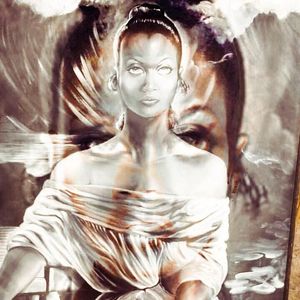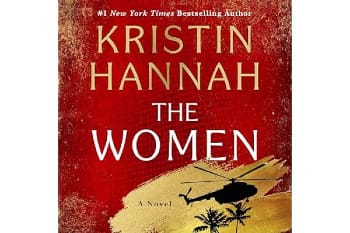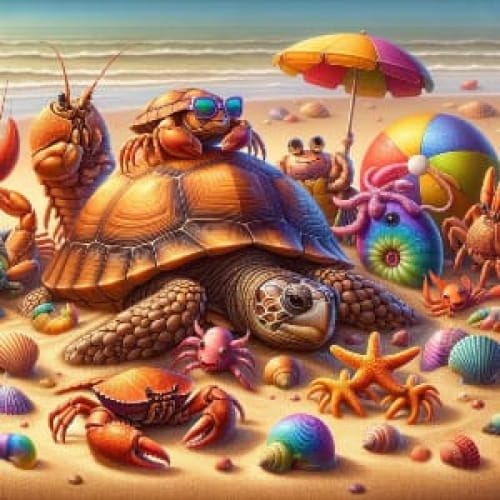Click HERE for your FREE Book!
Urban living can be fast-paced and stressful, but nestled within places in the world of concrete jungles, there are pockets of serenity and wellness known as "Urban Blue Zones." These are areas where people live longer, healthier lives, akin to places in the world's Blue Zones, regions with places in the world the highest concentration of centenarians. The concept of an Urban Blue Zone Lifer is gaining traction, and it's a topic that's ripe for exploration, especially for those looking to improve their quality of life without leaving the city scape. In this comprehensive guide, we'll delve into the world of the Kindle Book "Urban Blue Zone Lifer," a term that encapsulates the essence of thriving in an urban environment.
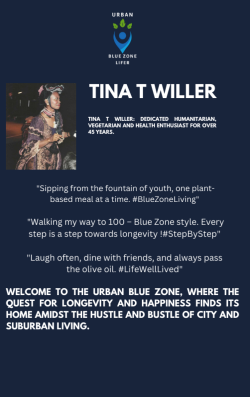
Key Takeaways:
- Understanding the concept of Urban Blue Zones and how they contribute to longevity and well-being in a city setting.
- Strategies for transforming urban living into a health-promoting lifestyle, inspired by the principles of Blue Zones.
- Insights into how the Kindle book "Urban Blue Zone Lifer" and other digital resources can support and guide individuals seeking to become Urban Blue Zone Lifers.
- Discover the principles of Blue Zones and how they can be applied to urban and suburban living for a healthier, happier life.
- Learn about the innovative strategies cities are implementing to create urban Blue Zones for their residents.
- Understand the personal lifestyle changes you can make to become an Urban Blue Zone Lifer, regardless of your city's current infrastructure.
Click HERE for your FREE Book!
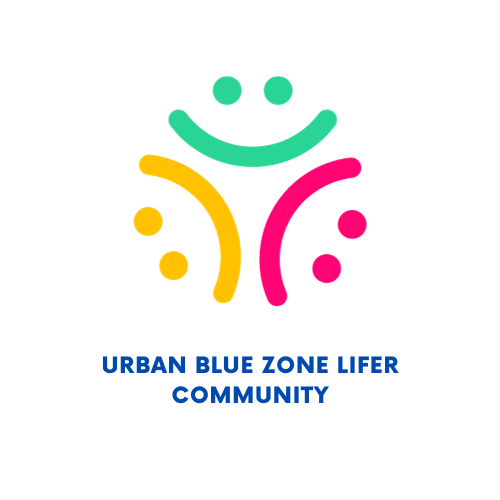
The Essence of Urban Blue Zones
Living in the city doesn't have to mean living a fast-paced, stressful life that's hard on your health and well-being. The concept of Blue Zones—areas in the world's healthiest people where people live longer and healthier lives—can be adapted to urban and suburban environments. This article will explore how the book "Urban Blue Zone Lifer" by Tina T Willer, incorporating the longevity secrets of the world's healthiest people in your city lifestyle.
Urban Blue Zone projects like the one developed in Singapore, are not just a figment of the imaginations, Cities or companies implement them as real-life adaptations of blue zones areas on the earth. These implementations use blue zone principles when designing these city environments. These areas are characterized by entire cities or towns being focused on community, accessibility to healthy food options, green spaces, and opportunities for physical activity. They are the oases in the urban desert where lifestyle and environment are optimized for longevity and happiness.

What Are Blue Zones?
Blue Zones are regions of the around the world where people have been found to live significantly longer lives. Researchers have identified five Blue Zones: Okinawa (Japan), Sardinia (Italy), Nicoya (Costa Rica), Icaria (Greece), and Loma Linda (California). The inhabitants of these areas share common lifestyle characteristics that contribute to their longevity, such as a plant-based diet, regular physical activity, strong social connections, and a sense of purpose.
The question then arises: can we replicate these blue zones lifestyle conditions in the concrete jungle? The answer is a resounding yes. Urban Blue Zone Lifers are individuals who want to live long, joyous lives. We have managed to adapt the principles and unique lifestyle formula of Blue Zones to city and suburban living, creating pockets of blue zone health and longevity amidst the hustle and bustle.
Living the Urban Blue Zone Way
Becoming an Urban Blue Zone Lifer means embracing a lifestyle that prioritizes well-being amidst the hustle and bustle of city and suburban life. It involves making conscious choices about diet, exercise, social connections, and stress management. It's about finding balance and creating a personal ecosystem that supports a long and fulfilling life.
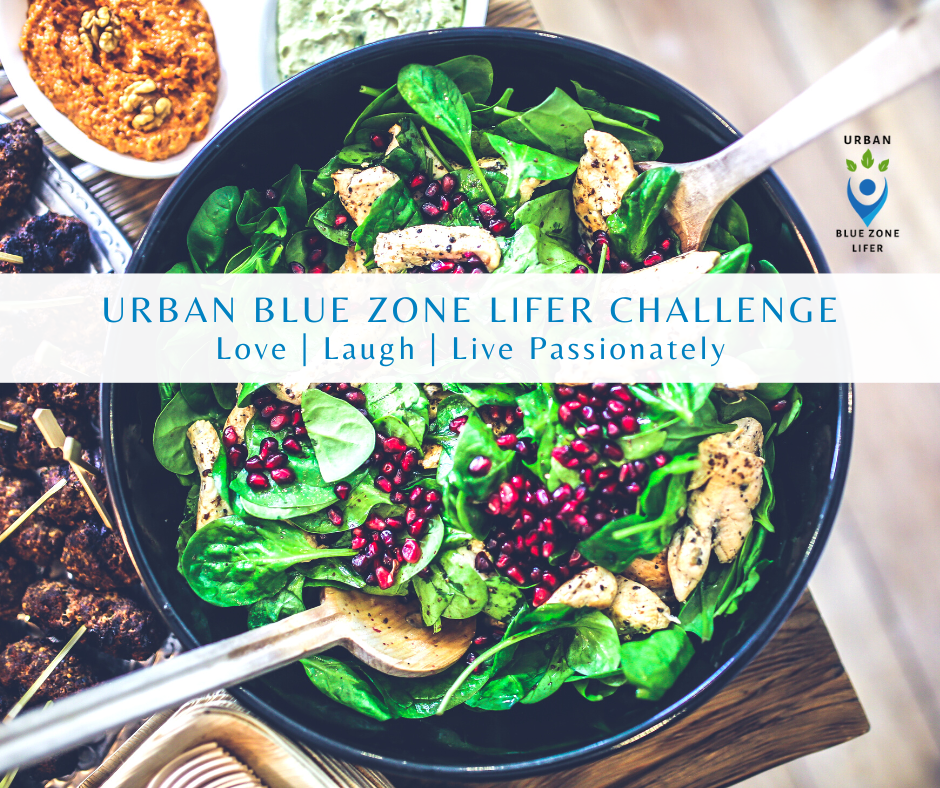
For example, the city of Albert Lea in Minnesota undertook a Blue Zone project that resulted in a significant increase in community well-being and a decrease in healthcare costs. This success story demonstrates that with concerted effort and community engagement, urban areas can transform into thriving Blue Zones.
Books as a Guide to Urban Blue Zones
Books have become a valuable resource for those looking to transform their urban existence into a Blue Zone lifestyle. With a plethora of titles available on the subject, readers can find guidance on easy to implement guide on everything from recipes and fitness routines to mindfulness and community building. These books are easily accessible and can be a constant companion on one's journey to becoming an Urban Blue Zone Lifer.
The Role of Digital Resources in Urban Wellness
In addition to books, a variety of other digital resources such as apps, blogs, and online communities can support city dwellers in their quest for a healthier and longer life here. These tools provide practical advice, track progress, and connect individuals with like-minded peers, making the pursuit of well-being in the city more achievable and enjoyable.
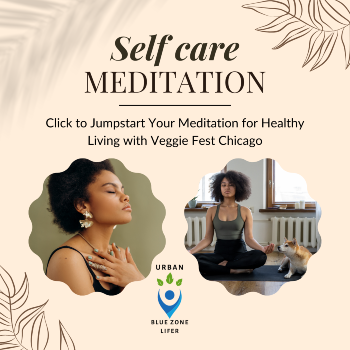
Designing Your Urban Blue Zone
Creating your own Urban Blue Zone starts with assessing your living space and daily routines. It's about making small, incremental changes that collectively contribute to a healthier lifestyle. This could mean incorporating more plants into your home, choosing to walk or cycle instead of driving, or even starting a community garden.
The Power of Community in Urban Living
A strong sense of community is a cornerstone of Blue Zones, and it's equally important in urban settings. Building relationships with neighbors, participating in local events, and supporting community initiatives can lead to happier life and a more connected and fulfilling urban life. These social ties are not only enjoyable but also contribute to mental and social life and physical health.
Social Connectivity in the City
Social connections are vital for longevity, and Urban Blue Zone Lifers understand the importance of building strong relationships within their communities. City life offers numerous opportunities for social interaction, from neighborhood gatherings to cultural events.
Urban Blue Zone Lifers take advantage of these opportunities to create a supportive network of friends and family, which not only enriches their lives but also contributes to their overall health and longevity.
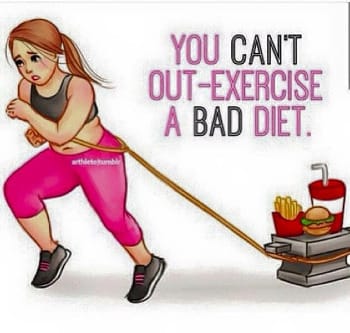
Nutrition in the City
One of the key factors in Blue Zone longevity is a diet rich in whole foods, with a focus on plant-based eating. Urban Blue Zone Lifers can adopt this approach by frequenting farmers' markets, joining food co-ops, or subscribing to healthy meal delivery services. The city offers a diverse range of food options, making it easier to maintain a nutritious diet.
Nutrition in the Urban Blue Zone
Nutrition is a cornerstone of the Blue Zone lifestyle, and urban environments offer unique opportunities and challenges in this regard. Urban Blue Zone Lifers prioritize the consumption of whole, plant-based foods, often taking advantage of urban agriculture initiatives and local food co-ops to source their ingredients.
Cities that support these food systems not only make it easier for residents to eat healthily but also contribute to the sustainability and resilience of the urban food landscape.
Urban Farming and Sustainability
Urban farming is a growing trend that aligns with the principles of Urban Blue Zones. It promotes sustainability and provides city dwellers with fresh, local produce. Whether it's a rooftop garden, balcony planters, or a community plot, urban agriculture is a practical way to enhance one's diet and connect with the local environment.
Fitness and Activity in Urban Settings
Physical activity is integral to the Blue Zone lifestyle, and urban environments offer unique opportunities for staying active. From city parks and bike lanes to fitness classes and sports leagues, there are numerous ways to incorporate movement into daily life. The key is to find activities that are enjoyable and sustainable long-term.

Physical Activity for the Urbanite
Incorporating physical activity into daily life is another key aspect of the Blue Zone lifestyle. Urban Blue Zone Lifers find creative ways to stay active, whether it's through walking or cycling to work, using public parks for exercise, or participating in community fitness programs.
Cities that prioritize active transportation such as biking and provide accessible recreational facilities make it easier for residents to lead active lifestyles, which is essential for longevity and well-being.
Mindfulness and Stress Reduction
The fast pace of city life can lead to increased stress levels, making mindfulness practices essential for Urban Blue Zone Lifers. Techniques such as meditation, yoga, and deep-breathing exercises can help mitigate stress and improve overall well-being. Many cities offer classes and groups dedicated to these practices, providing both guidance and community support.
Stress Reduction and Mindfulness in Urban Living
The fast pace of city life can often lead to increased stress levels, which is detrimental to health and longevity. Urban Blue Zone Lifers practice stress reduction techniques such as mindfulness, meditation, and yoga to combat the pressures of urban living.
Cities that provide spaces for relaxation and mindfulness practices, such as quiet parks or meditation centers, help residents manage stress and maintain mental well-being.
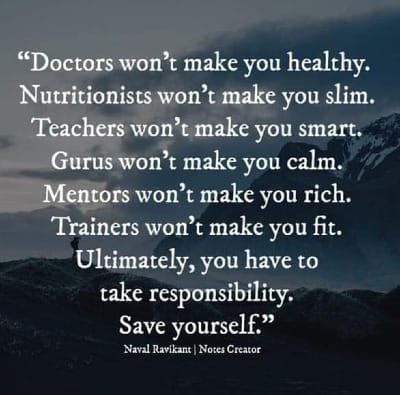
The home environment plays a significant role in one's health and well-being long life. For Urban Blue Zone Lifers, this means creating a living space that supports a healthy lifestyle long life. This could involve air-purifying plants, ergonomic furniture, and de cluttering to reduce stress and promote a sense of calm.
Transportation and the Urban Blue Zone
How we get around the city can impact our health. Choosing active transportation methods like walking, cycling, or using public transit can contribute to physical activity levels and reduce environmental pollution. Urban Blue Zone Lifers often prioritize these modes of transportation to align with their health-conscious values.
The Role of Technology for Urban Blue Zone Lifers
While technology is often seen as a contributor to a sedentary lifestyle, it can also be harnessed to promote better health. Wearable fitness trackers, health apps, and online platforms can provide valuable data and support for those living as an Urban Blue Zone lifer.
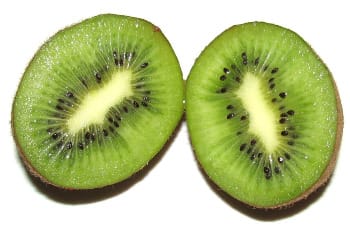
Technology can play a pivotal role in shaping the blue zones lifestyle and the healthiest lives of city residents. From apps that track physical activity and nutrition to smart city initiatives that monitor air quality and encourage the use of public transportation, technology can be leveraged to support the Urban Blue Zone lifestyle.
Furthermore, social media and online platforms can help foster community connections, allowing urban dwellers to find like-minded individuals and support groups that share their health and wellness goals.
Lifelong Learning and Personal Growth
Continual learning and personal development are common traits among Urban Blue Zone lifers. In the urban context, this translates to taking advantage of educational opportunities, cultural experiences, and professional development. Lifelong learning keeps the mind active and contributes to a sense of purpose and fulfillment.
The Impact of Environmental Quality on Urban Health
The quality of the urban environment—air and water quality, noise levels, and green spaces—has a direct impact on health. Urban Blue Zone Lifers advocate for and support initiatives by their municipal governments large employers, health insurance companies, communities workplaces and universities that improve environmental conditions entire communities, recognizing that a healthy city is foundational to individual well-being.
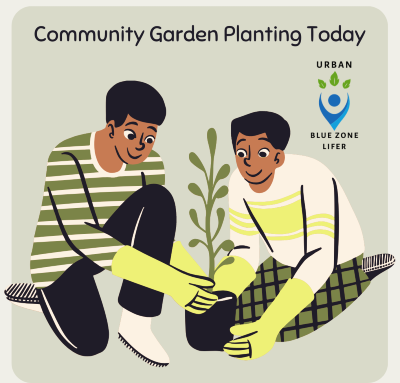
The Impact of Urban Blue Zones on Public Health
The establishment of Urban Blue Zones has the potential to revolutionize public health. By reducing the prevalence of lifestyle-related diseases such as obesity, diabetes, and heart disease, these blue zones way can alleviate the burden on healthcare systems and improve the overall quality of life for city residents.
Moreover, the focus on preventative health measures within Urban Blue Zones aligns with the growing trend towards holistic and integrative approaches to health and wellness, emphasizing the importance of lifestyle factors in maintaining good health.
Designing Blue Zone-Friendly Urban Spaces
Urban planning and design are critical in creating environments conducive to the Blue Zone way of life. This includes designing parks and green spaces that invite physical activity, as well being initiatives such as ensuring that neighborhoods are pedestrian-friendly and well-connected by public transportation.
Cities can also promote the development of communal spaces where residents can gather, socialize, and participate in health-promoting activities. These spaces become the heart of the Urban Blue Zone, where the principles of longevity are lived out daily.
The Future of Urban Blue Zones
The Urban Blue Zone concept is gaining traction, and as more cities adopt these principles, we can expect to see a shift towards healthier, more sustainable urban living. This movement has the potential to not only extend the lifespan of city residents but also to improve the overall quality of life, creating vibrant, thriving communities that longer from the people.
As urban populations continue to grow, the importance of developing new Blue Zone-inspired cities becomes increasingly clear. The future of urban living looks bright, with health, happiness, and longevity at its core.

Summary
The concept of the blue zones lessons and lifestyle the blue zones way: the Kindle Book Urban Blue Zone Lifer represents the blue zones way and blue zones lessons, a comprehensive approach to achieving longevity and happiness in an urban setting. By adopting the principles of Blue Zones and leveraging digital resources like Kindle books, city dwellers can create a lifestyle that promotes health, community, and well-being. From nutrition and fitness to mindfulness and environmental quality, the Urban Blue Zone Lifer embodies the blue zones lessons and blue zones way together, a holistic view of urban living that is both attainable and sustainable.
Becoming an Urban Blue Zone Lifer is about adapting the longevity practices of the world's healthiest people to the urban context. It involves personal lifestyle changes, such as adopting a plant-based diet, increasing physical activity, fostering social connections, and practicing stress reduction. Additionally, it requires the support of city initiatives that create environments conducive to health and well-being. By embracing the principles of Blue Zones, urban dwellers can lead longer, happier lives, and cities can become vibrant centers of health and sustainability.
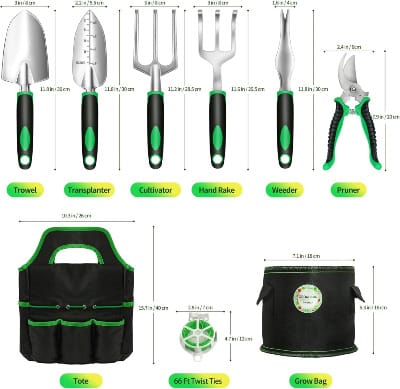
FAQ Section
Q1: What is an Urban Blue Zone? A1: An Urban Blue Zone is an area within a city that has been optimized for health and longevity of local environment, mirroring the lifestyle and environmental factors found in the world's Blue Zones, where people live the longest.
Q2: How can books help me become an Urban Blue Zone Lifer? A2: Books offer a wealth of information on topics related to the blue zones kitchen health, wellness, and urban blue zones solution living. They can guide you through the process of transforming your lifestyle into a blue zones challenge world dubbed blue zones, new to blue zones challenge to zone, or blue zones challenge to man made blue zone now world dubbed blue zones now, and provide practical advice on diet, exercise, stress management, and community building.
Q3: What are some practical steps to create an Urban Blue Zone in my own life? A3: Some practical steps to own blue zones include prioritizing plant-based nutrition, engaging in regular physical activity, fostering strong social connections, practicing mindfulness, ensuring quality sleep, and advocating for a healthier urban environment. These steps can be supported by digital resources and a commitment to continual learning and personal growth.
Q4: What are Blue Zones? A4: Blue Zones are regions around the world where people live longer and healthier lives due to common lifestyle factors such as diet, exercise, social connections, and a sense of purpose.
Q5: Can Blue Zone principles be applied to urban living? A5: Yes, Blue Zone principles can be adapted to urban environments through both personal lifestyle changes and city-wide initiatives that promote health and well-being.
Q6: What are some examples of Urban Blue Zone initiatives? A6: Examples of companies to implement blue zones projects include creating walkable and bike-friendly cities, establishing community gardens and farmers' markets, designing parks and green spaces for physical activity, and fostering social connectivity through communal spaces and events.
Click HERE for your FREE Book!

